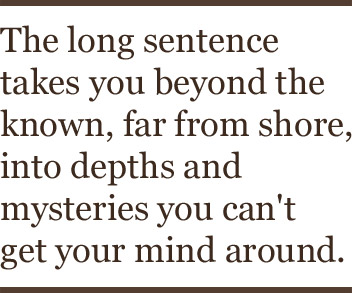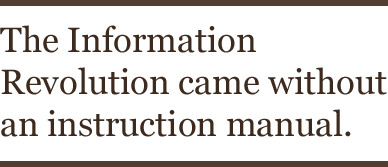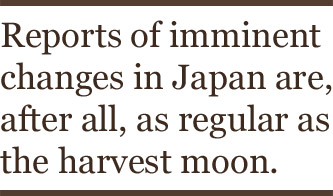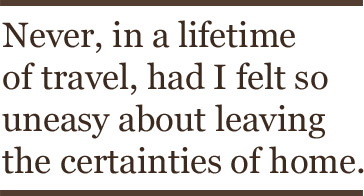Q: This is an eccentric book, and I’m not sure what readers will make of it.
A: That’s not so terrible; one of the things I tried very hard to do here was create a weird, hybrid form of sorts, in which you never know what’s going to happen next—or who exactly is going to be the subject. A very full biography of Graham Greene, 2200 pages long, has already been written; novel after memoir after romance has been published by those who knew him and those who didn’t, yet feel haunted by him. The world has no need of another straight book on “Following Graham Greene” or evoking his personality.
But I hoped there might be room for a book that hovers unexpectedly somewhere between autobiography and biography, and tries to see how much what I say about Greene may really be about me, or vice versa; and a book that cuts back and forth between fairly quiet and private introspection and scenes of tumult in the world (which is just the back-and-forth I see and love in Greene). A year before I’d finished this book, I had a full subtitle to explain what it was about; six months later, my subtitle said only “An Enquiry”; now, the book has no subtitle at all. That’s meant to be a way of suggesting the mysterious, neither-here-nor-there quality of the book and of its subject. Is the “man within my head” Greene—or my father, or me? I don’t want to settle those questions.
The fact I was trying to make up my own genre didn’t make the book easy to write, of course; I had to devise my own structure, and follow a kind of emotional, improvised logic more than that of chronology or A-B-C. And I wanted to expand the form to accommodate many different angles, which meant that I wrote maybe twenty times more than I ultimately had room for. But writing has to do something startling to justify its existence, especially as rivals to books multiply these days. After seven books of non-fiction and thousands, literally, of articles, I longed to do something new, to keep myself engaged; I’m a traveler at heart.
It wouldn’t be hard, I think, to write an interesting and fun book on Graham Greene, and many have done so splendidly. But I thought it would be more interesting to try something trickier, true to his shifting sense of identity—and maybe even to dramatize that sensation that every writer knows whereby you start writing a work on something that possesses you, and, as you proceed, you realize that it’s really about something very different, and a presence within you that you never even thought to explore is taking over.
Q:But doesn’t Greene these days feel like a figure out of the distant past? I don’t know how many young people read him now.
A: Nor do I. But the book, as I see it, is about soul possession of a kind, imaginary friends, those people who haunt us and take residence in our heads even if, especially if, they seem very remote to us. And that is timeless, perhaps even more common now than it was twenty years ago, thanks to our virtual, bodiless lives. It could be Steve Jobs among certain kids today, or Jay-Z—or Jane Austen; but I’m interested in what places them there–why Jay-Z and not Kanye West?–and what purpose they serve. What do they say about the people who ought to be prominent in our heads, often our parents, and what does it say about the nature of affinity? Why, for example, do I dream so often of Paris even though I’ve spent so little time there? Why do I never dream of the places where I’ve lived all my life?
Apart from all that, I think rumors of Greene’s literary death or irrelevance may be premature. He belongs very firmly to an age that seems vanished—the 1950s, you could say—and yet for me his real themes are the ageless ones, of fear and faith and betrayal. His books are almost allegories about a man on his knees by his bed in the dark, as mortarfire explodes outside, and his seeming enemy extends a hand. Friends of mine who teach tell me that some of their students find Greene an imperialist, or retrograde in his attitude to women, an emblem of the faded British Empire; yet those same teachers tell me that their students can’t stop talking about him!
It’s no coincidence, I think, that, together with Somerset Maugham, Greene keeps inspiring new movie versions of his books, every other year. He has often been a target of sniggers in the academy, for being so readable and traditional in his techniques and popular; but for most of us, those are precisely the reasons why he endures. The most recent film of The Quiet American had to be held back after it was screened for its producers on September 10, 2001—not because it was so irrelevant, but the opposite: because, 24 hours after the screening, it seemed much too close—again!—to the world we live in.
Q: There’s a lot about your father in this book. Is he its real subject?
A: No, though fatherhood might be, in part, and the nature of influence, and why, as I write in it, blood relations are not the only important ones.
To be honest, I never saw much of my father while I was growing up, because I was mostly at boarding-school, 6000 miles from home; like Greene in a way, I was a product of an ancient, cloistered system, in which one is taught to live alone, very far from family, and to take one’s family from among one’s friends, and not always one’s relatives. And my father, though a strong and very vivid figure, was gracious enough to let me gain my education far away from him.
But, like most of us, I found—and find, as the years go on—that there’s far more of my father in me than I would ever have imagined. The same person I grew away from is in my face and in my voice daily. And in that regard, too, the great project of self-invention—so many of us are proud of seeming to have made ourselves up, as it were, from scratch–has failed, or is a myth.
My father was a wonderfully colorful soul, who came out of nowhere to win India’s only Rhodes Scholarship in 1950 and seemed likely to become a leading figure in India until he went to California in the ‘60s; but possibly for that very reason, I never felt I knew exactly who he was beneath the surface. That becomes even more interesting when I see how much of him is in me, and how little I know of myself, perhaps, underneath my gestures and reflexes.
I invoke Greene here because to me he is the great model of unflinching self-questioning, of honesty and of intimacy on the page, if not in life; you can say that he was slippery, treacherous, self-enclosed and a model of non-commitment, but then you’d have to add that he said all of that about himself, and much better, in his books.
Plus, the more I reread his work, the more I found that fathers, actual and imagined, were one of his great themes, which haunt every book from the first published novel, in 1926, to the last, in 1989. I don’t know nearly enough about my father to write a memoir, and not all the things I do know would fit into a book such as this; but it’s the larger dynamic that intrigues me, of how you can best see yourself when reflected back to you in another person. Unriddling an unmet writer may be a wonderful way of unriddling yourself. “Most people,” as Oscar Wilde said, “are other people”; that’s arguably the launching-pad of much fiction and drama.
Q: You’re mostly known as a writer of travel books. Isn’t this a departure?
A: Not to me. Who traveled more than Greene, especially in some inward sense? That’s part of what I love about him: the mobility, the ability to see things from many different angles, the refusal to remain fixed within dogma or seeming certainty. Even faith was something he traveled around, constantly, rather than something he settled into.
As Thoreau often said, it takes much more courage to venture into the icy depths and dark caverns within oneself than just to go to Haiti or Saigon—especially these days, when the latter merely involves jumping on a plane.
This book moves, of course, with deliberate abruptness, from Bolivia to Mexico to Vietnam to Ethiopia to Cuba to Colombia to Sri Lanka to Bhutan and back to Bolivia; its central poles are California and England. But its real theme, as I say somewhere, is how travel can affect one’s approach to the world, make one a relativist, or help one see the point of almost every position and sympathize, sometimes fatally, with both sides in an argument. And how travel, more than anything, dramatizes the moral and emotional struggles that often we look past or shy away from when we’re at home.
In some ways—though people may be shocked to hear this—I see this book as being very much a sequel to my last book, on the Dalai Lama. Friends of mine have asked, “How can you possibly liken a famous man of spiritual clarity and goodness to one of literature’s most celebrated sinners and doubters?” But Greene, for me—or the Greene I choose to imagine—was always preoccupied with the Dalai Lama’s questions: how to act with conscience and kindness in the world, and how to be a realist and yet have faith? One wise friend of mine in New York said to me, a few years ago, “Every time you come to the city, it’s either to talk about Raymond Chandler or the Dalai Lama.” Now I’ve brought the two together a bit.
Like most writers, I suppose, I see all my books as being of a piece. My first two were explicitly about the exchange of dreams (or sometimes illusions) between cultures on far sides of the world. One of the central themes in this book is my commute between my parents’ home in the California of the ‘60s and the 15th century boarding-school in which I grew up in England. Between faith and skepticism, you could say; between the very fluid and the very settled. In each of them, it seemed to me, people were dreaming of what the other had, and in some ways Greene’s own commute, between his father, headmaster of such a school, and his rebellions against him, his shadow-fathers—like the Jungian dream analyst he stayed with as a teenager–reflected my situation exactly, in reverse. His great novel, for me, The Quiet American, is about nothing other than the haunted fascination and closeness between an aging Englishman and a young idealistic American.
I think most readers have some equivalent in their lives, and one of the stories of the age is how we move between centuries and completely disparate lives at greater speed and with greater ease than ever before. One thing that has always moved me about Greene is that he writes in such a personal way, about the most private and often agonizing issues, yet somehow he reaches and speaks to millions of the rest of us.
Q: Did you enjoy writing this book?
A: I really did. In part because it was such a challenge, so different in terms of structure from anything I’d written before, so unexpected even to me. It may not look like it, because I worked very hard to give it a haunted and even troubled feel, to be loyal to what I see and admire in Greene, and because I see Greene as an incitement to look at precisely the shadows and uncertainties I’d rather look away from. And I deliberately took myself to places that are edgy and murky, that ask difficult questions. But that’s the fun of writing for me, and that’s what makes it such an adventure. I’ve written quite a bit about the externals of the world, books of observation; so it’s intriguing for me to try something more inward and to make myself a subject of investigation.
I’ve never worked so hard on any book before; I spent more than eight years producing what is only a slim work, and I sent my first finished draft to my editor six and a half years ago. Indeed, I wrote the whole book as fiction—a series of imaginative approaches to Greene—and then decided that that would serve just as “back story,” a way of getting deeper into him, as I took him on in non-fictional form. I would say that I wrote 3000 highly polished, finished, fact-checked pages to generate the 250 I finally sent in. And even read the entire manuscript aloud to make sure the commas and cadences fell in the right places.
But that’s all part of the joy of the process! My first books I wrote very quickly—I was a full-time journalist then—and I feel they read amusingly and speedily and are full of facts and brisk sentences; but they may evaporate equally fast. My more recent books are much harder to read and enjoy; but my hope is that, for a handful at least, they may linger in the mind or prompt occasional rereadings. Of course, I’m writing against the curve, producing ever slower, more inward and more recessive books as the culture as a whole moves towards speed, immediacy, pell-mell stimulation. But that’s deliberate. And if readers want very quick diversion, they can find it much more excitingly in many other places.
For me the value of reading, more than ever, is to take us to those places that the rest of life ignores. Writing can’t begin to compete against all the multi-media, split-screen, visual and auditory excitements of the time for pace or urgency; but it can offer us a few deeply inward pleasures—even silences—that none of those new technologies can match. I wanted this book to stake out that space, that sense of mystery and nuance, which almost nothing but writing can bring us towards. If the reader takes away questions, tremors, uncertainties—and not the facts or sensations that our onscreen lives so constantly bombard us with—I’ll be delighted!
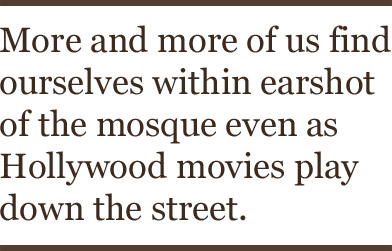 In Other Colors, his first big assemblage of non-fiction, Pamuk gives us all his many selves in a typically centrifugal gathering of memory-pieces, sketches (both literal and verbal), interviews and unexpected flights. The result is what could be called a gallery of Pamuks: here is the author of the haunted, half-lit enquiry into melancholy and neglectedness, Istanbul: Memories and the City, with further glimpses of the “forest of secret stairways” that is his home; here is the man who so loves books that he wrote a whole novel, The New Life, about a character whose life is turned around by a book, with essays on the writers who possess him. Here, too, is the author of the fearlessly topical Islamic novel, Snow, who, two years ago, was brought to trial by his government after telling a Swiss newspaper that it was taboo in Turkey to mention the local slaughter of 1 million Armenians and up to 30,000 Kurds, with public statements on freedom of expression; and here, round every corner, is the whimsical, endlessly inventive juggler of possibilities writing pieces in the voice of the subjects of a painting, and of Meaning itself.
In Other Colors, his first big assemblage of non-fiction, Pamuk gives us all his many selves in a typically centrifugal gathering of memory-pieces, sketches (both literal and verbal), interviews and unexpected flights. The result is what could be called a gallery of Pamuks: here is the author of the haunted, half-lit enquiry into melancholy and neglectedness, Istanbul: Memories and the City, with further glimpses of the “forest of secret stairways” that is his home; here is the man who so loves books that he wrote a whole novel, The New Life, about a character whose life is turned around by a book, with essays on the writers who possess him. Here, too, is the author of the fearlessly topical Islamic novel, Snow, who, two years ago, was brought to trial by his government after telling a Swiss newspaper that it was taboo in Turkey to mention the local slaughter of 1 million Armenians and up to 30,000 Kurds, with public statements on freedom of expression; and here, round every corner, is the whimsical, endlessly inventive juggler of possibilities writing pieces in the voice of the subjects of a painting, and of Meaning itself.



